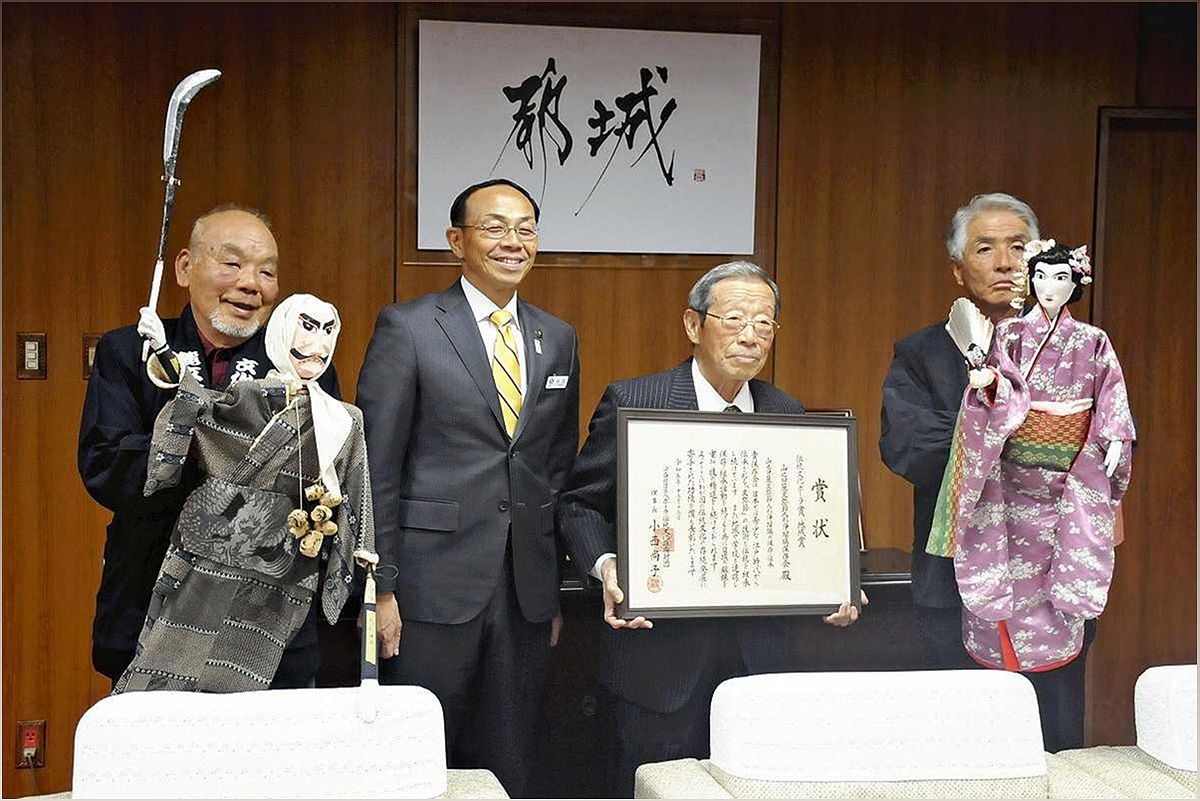Discover the rich history and cultural significance of the Yamanokuchi Fumoto Bunyabushi puppet show, a traditional Japanese treasure recognized with the Pola Award for Traditional Japanese Culture. Learn how a dedicated preservation group is ensuring the longevity of this unique art form.
The Yamanokuchi Fumoto Bunyabushi Puppet Show: Preserving Traditional Japanese Culture
The Yamanokuchi Fumoto Bunyabushi puppet show, a traditional Japanese cultural treasure, has been recognized with the Pola Award for Traditional Japanese Culture in the regional culture category. This prestigious award is presented annually by the Pola Foundation for the Promotion of Traditional Japanese Culture in Tokyo.
The Yamanokuchi Fumoto Bunyabushi puppet show has a rich history that dates back to the Edo period (1603-1867). It has been cherished and passed down through generations in Miyakonojo, Miyazaki Prefecture. The puppet show was especially popular during festive occasions, captivating local audiences with its unique puppetry and traditional Bunyabushi music.
After a temporary discontinuation of the puppet shows following World War II, local residents came together in 1951 to form a preservation group. Their efforts were rewarded when the Yamanokuchi Fumoto Bunyabushi puppet show was designated as an important intangible folk cultural property by the central government in 1995. This recognition further highlighted the significance of the puppet show in preserving Japanese cultural heritage.
The Significance of the Yamanokuchi Fumoto Bunyabushi Puppet Show
The Pola Foundation commended the puppet show for its cultural value and its unique characteristics. The puppeteers manipulate each puppet individually, showcasing their skill and expertise. The Bunyabushi music, which was highly popular during the early Edo period, adds an enchanting element to the performances.
One notable aspect that impressed the foundation was the preservation group's commitment to educating local elementary school students about the puppet show. For the past 30 years, they have been teaching children how to use the puppets, providing them with a hands-on experience of this traditional art form. Approximately 580 children have had the opportunity to learn and appreciate the Yamanokuchi Fumoto Bunyabushi puppet show, ensuring its continuation in the future.
Kimitomo Maeda, the head of the preservation group, expressed his gratitude for the recognition and the foundation's acknowledgment of culture in a rural area like Miyakonojo. He also shared his hope that some of the children they have taught may become future successors, ensuring the legacy of the puppet show for generations to come.
Preserving the Yamanokuchi Fumoto Bunyabushi Puppet Show
Currently, the puppet show is performed four times a year in March, June, September, and November. Despite facing challenges such as a shortage of successors, the preservation group remains dedicated to passing down this traditional art form to future generations. They believe in granting the wishes of their predecessors and ensuring the longevity of the Yamanokuchi Fumoto Bunyabushi puppet show.
The Pola Award for Traditional Japanese Culture celebrates and supports those who contribute to the preservation of traditional craftsmanship, performing arts, folk arts, and events. By recognizing the Yamanokuchi Fumoto Bunyabushi puppet show, the foundation is not only honoring its historical significance but also acknowledging the efforts of the preservation group in keeping this traditional art form alive.
The Yamanokuchi Fumoto Bunyabushi puppet show stands as a testament to the rich cultural heritage of Miyakonojo and serves as a reminder of the importance of preserving traditional Japanese culture. It is through the dedication and passion of individuals like Kimitomo Maeda and his preservation group that these treasured traditions continue to thrive.


